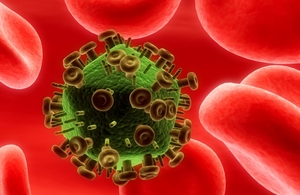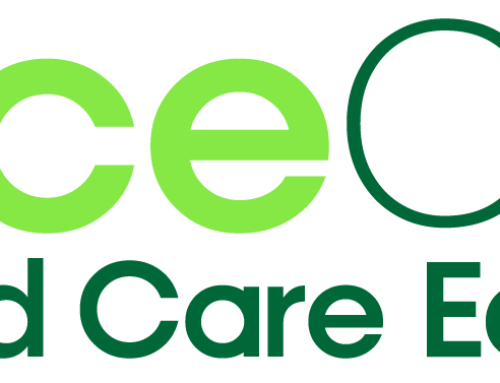2022 saw the highest ever uptake of HIV testing among gay, bisexual, and other men who have sex with men (GBMSM), with diagnoses in this group continuing to fall, according to the latest HIV surveillance update for the UK. However, the data shows work must still be done to improve testing uptake, particularly among ethnic minorities and women.
The data for England – published by the UK Health Security Agency (UKHSA) – provides an overview of trends in relation to HIV testing, HIV pre-exposure prophylaxis (PrEP), post-exposure prophylaxis (PEP), new HIV diagnoses, late diagnoses, and the care outcomes for people accessing HIV services.
Regular HIV testing is vital to help prevent new infections while also ensuring timely access to treatment that saves lives and prevents the virus being passed on.
The latest data highlights:
- HIV diagnoses continue to fall in GBMSM but have risen in heterosexual adults and particularly in women and ethnic minority groups
- 2022 saw the highest ever uptake of HIV testing among GBMSM in sexual health services (SHSs) but with smaller increases in other groups
- the number of people taking PrEP rose between 2021 and 2022 but inequalities in uptake remain by sexual orientation
- half of people living with diagnosed HIV were aged 50 years or over in 2022, reflecting the success of HIV treatment in enabling people with HIV to have long healthy lives
There were 94,397 people living with diagnosed HIV infection and accessing care in England in 2022. In 2022, 98% of people with diagnosed HIV were on treatment with undetectable virus in their blood so that it cannot pass on to others. This is known as undetectable=untransmittable (U=U).
Testing in SHSs among GBMSM is the highest ever recorded (192,503 in England in 2022 compared with 156,865 in 2019). However, despite increasing from 2021, the number of heterosexual adults having an HIV test is still below pre-COVID-19 levels (792,875 in England in 2022 compared with 1,051,391 in 2019).
PrEP provision continues to increase. In 2022, 86,324 people in England received PrEP, an increase compared to 2021 (61,510) with the highest rise among heterosexual adults. Figures still show that there is more work to be done to meet the PrEP needs of heterosexual and bisexual women, heterosexual men and ethnic minority groups.
Dr Alison Brown, Interim Head of HIV Surveillance at UKHSA said:
In 2022 we saw further improvements in HIV testing and PrEP access, but progress has been uneven. The continued lower rates of HIV testing and PrEP among women and ethnic minority groups is concerning.
An HIV test is free and provides access to PrEP if needed. If you do test positive, treatment is so effective that you can expect to live a long healthy life and you won’t pass HIV on to partners.
If you have HIV, you are eligible for a flu and COVID-19 vaccination this autumn and winter to help protect against serious consequences of these infections.
In England, there were 3,805 HIV diagnoses in 2022, a 22% rise from 3,118 in 2021. Of the 3,805 diagnoses, 64% (2,444) were diagnoses first made in England while 36% (1,361) were diagnoses among people previously diagnosed abroad. The number of HIV diagnoses first made in England rose by 6% from 2,313 in 2021 to 2,444 in 2022.
The rise in HIV diagnoses first made in England during 2022 is likely due to lower HIV testing rates during the COVID-19 pandemic. Lower testing rates are also likely to be a key reason for the increase in the number of late diagnoses, from 812 in 2021 to 865 in 2022. There has been a particular rise in late diagnoses among heterosexual women (191 in 2021 to 239 in 2022).
Despite this, there was a fall in diagnoses first made in England in GBMSM, (from 784 in 2021 to 724 in 2022), with the decrease steepest in white men. However, diagnoses rose in heterosexual adults (from 870 in 2021 to 976 in 2022), with an increase in women living outside of London (from 300 in 2021 to 393 in 2022).
Professor Kevin Fenton, Chief Advisor on HIV to Government and Chair of the HIV Action Plan Implementation Steering Group, said:
The latest data shows the positive results of our ongoing efforts to end new HIV transmissions within England by 2030. Through our HIV Prevention Programme (HPE) and the fantastic work of our local authority and NHS colleagues, we are making positive progress to boost testing uptake and improve timely access to effective treatment.
However, we’re not yet seeing progress across the board and there remain some concerning trends around low testing and PrEP uptake in certain groups, particularly in women and those from ethnic minority backgrounds.
As we continue working to reduce HIV transmission, it is expected that we will see evidence of inequalities, especially in those populations with access and engagement issues in prevention and treatment services. The report’s findings reinforce the need for targeting and prioritising the most vulnerable communities while maintaining robust prevention, treatment and care programmes for all.
Our priorities for HIV control remain the same and must now be accelerated to respond to the emerging trends; scaling up HIV testing, expanding access to HIV PrEP, linking and maintaining patients in high quality HIV care, and tackling HIV stigma. The latest data will allow our partners to continue working with affected communities, further target resources and prioritise interventions where they are most needed.
Each year, this official statistics report is followed by a separate update in December on the progress being made towards the ambition – set out in the HIV Action Plan – to reduce HIV transmission in England by 80% between 2019 and 2025.
UK Health Security Agency press office
10 South Colonnade
London
E14 4PU






